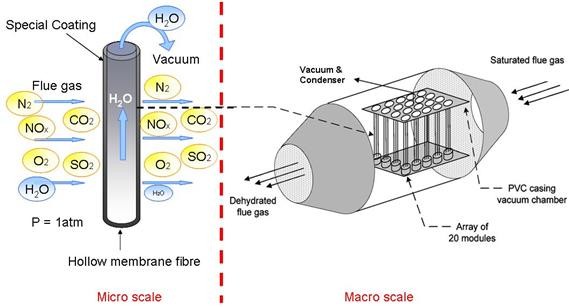CAPWA - CAPture WAter – A new source of water
The CAPWA project has developed a novel water capture technology capable of extracting water molecules from water containing gas streams emitted from fossil fuel power plants or papermaking plants.

The challenge
Water scarcity has become a huge issue towards human use. There is indeed a growing demand for clean drinking water, water for agriculture and water for use in the industry. The hurdle is all the more significant in arid regions.
Alternative methods, such as desalinating seawater, have emerged. Although they can contribute to alleviating water shortage in water-stressed areas, these are only available to countries where seawater is accessible. Nonetheless, atmospheric water is uniformly distributed around the globe (575 000 km3 of water evaporates each year in the atmosphere according to statistics). Likewise, evaporated water is present in many industrial processes.
It is assumed that recovering some of the evaporated water used in industrial processes would represent a valuable water source. The technology developed by CAPWA addresses this challenge. A novel membrane technology has made it conceivable to exploit this water source.
The innovation
The key-concept of the innovative membrane developed within the CAPWA project consists in filtrating the water molecules from the other molecules in the gas stream. As a matter of fact, a physical filtration is achieved within hollow fibres which are covered with a water-selective coating: only the water molecules can pass through the membrane. Inside each hollow fibre, vacuum is created, thereby generating a pressure difference. A diffusion mechanism can then occur (see picture below) and the dewatering action of the gas stream can therefore be achieved.
The water capture technology appears particularly relevant for many industrial processes where water containing gas streams are present.
A first possible application deals with fossil fuels power plants in which CO2 and water vapour are emitted. The potential benefit could be double as water is generally used to produce steam within such plants, and energy is used for re-heating the water-containing gas flue (i.e. to avoid corrosion issues). The implementation of the water capture technology could both lead to increased energy efficiency and a more sustainable water cycle
